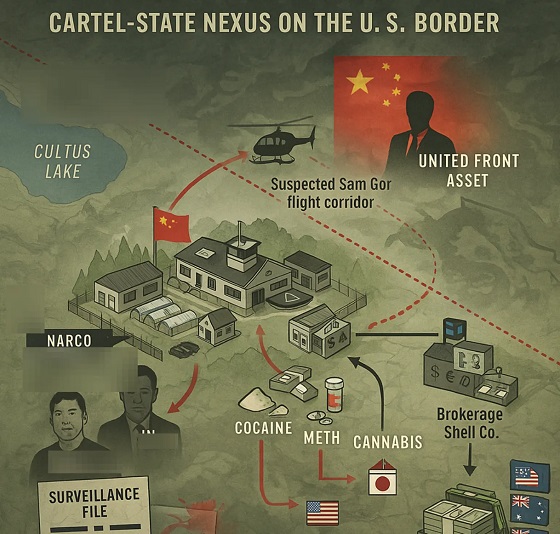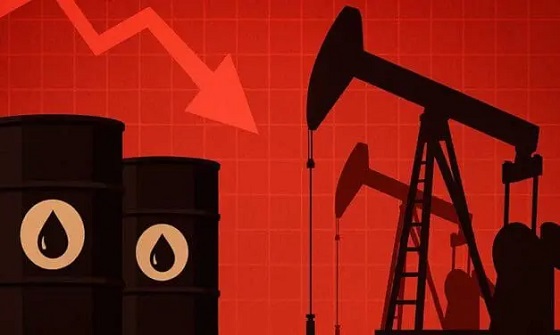COVID-19
Evidence on the origin of Covid leads to lab in Wuhan – Former NY Times Science Editor

In the millions of articles, opinion pieces, and news stories written about Covid there is one topic that is more important than all the others. It’s more important than masks, vaccines, or lockdown measures. The origin of the virus is critical because no matter how many people die from covid, or how many businesses are wiped out, it’s critical that IF the next virus can be stopped, it mu st be.
A science writer named Nicholas Wade has written the most thorough study on the origins of Covid to be released to the public. Wade has worked with Nature, Science, and the New York Times, but this article was released on the public platform Medium. In this article Wade goes through three possible scenarios and then draws the most likely conclusion. This is a long read, but it might be the most important article yet written during this pandemic.
Here is the beginning of this extensive article from Medium. Click here to read the full article on Medium.
Origin of Covid — Following the Clues
Did people or nature open Pandora’s box at Wuhan?
Nicholas Wade
I’m a science writer and have worked on the staff of Nature, Science and, for many years, on the New York Times. [email protected]
The Covid-19 pandemic has disrupted lives the world over for more than a year. Its death toll will soon reach three million people. Yet the origin of pandemic remains uncertain: the political agendas of governments and scientists have generated thick clouds of obfuscation, which the mainstream press seems helpless to dispel.
In what follows I will sort through the available scientific facts, which hold many clues as to what happened, and provide readers with the evidence to make their own judgments. I will then try to assess the complex issue of blame, which starts with, but extends far beyond, the government of China.
By the end of this article, you may have learned a lot about the molecular biology of viruses. I will try to keep this process as painless as possible. But the science cannot be avoided because for now, and probably for a long time hence, it offers the only sure thread through the maze.
The virus that caused the pandemic is known officially as SARS-CoV-2, but can be called SARS2 for short. As many people know, there are two main theories about its origin. One is that it jumped naturally from wildlife to people. The other is that the virus was under study in a lab, from which it escaped. It matters a great deal which is the case if we hope to prevent a second such occurrence.
I’ll describe the two theories, explain why each is plausible, and then ask which provides the better explanation of the available facts. It’s important to note that so far there is no direct evidence for either theory. Each depends on a set of reasonable conjectures but so far lacks proof. So I have only clues, not conclusions, to offer. But those clues point in a specific direction. And having inferred that direction, I’m going to delineate some of the strands in this tangled skein of disaster.
A Tale of Two Theories
After the pandemic first broke out in December 2019, Chinese authorities reported that many cases had occurred in the wet market — a place selling wild animals for meat — in Wuhan. This reminded experts of the SARS1 epidemic of 2002 in which a bat virus had spread first to civets, an animal sold in wet markets, and from civets to people. A similar bat virus caused a second epidemic, known as MERS, in 2012. This time the intermediary host animal was camels.
The decoding of the virus’s genome showed it belonged to a viral family known as beta-coronaviruses, to which the SARS1 and MERS viruses also belong. The relationship supported the idea that, like them, it was a natural virus that had managed to jump from bats, via another animal host, to people. The wet market connection, the only other point of similarity with the SARS1 and MERS epidemics, was soon broken: Chinese researchers found earlier cases in Wuhan with no link to the wet market. But that seemed not to matter when so much further evidence in support of natural emergence was expected shortly.
Wuhan, however, is home of the Wuhan Institute of Virology, a leading world center for research on coronaviruses. So the possibility that the SARS2 virus had escaped from the lab could not be ruled out. Two reasonable scenarios of origin were on the table.
From early on, public and media perceptions were shaped in favor of the natural emergence scenario by strong statements from two scientific groups. These statements were not at first examined as critically as they should have been.
“We stand together to strongly condemn conspiracy theories suggesting that COVID-19 does not have a natural origin,” a group of virologists and others wrote in the Lancet on February 19, 2020, when it was really far too soon for anyone to be sure what had happened. Scientists “overwhelmingly conclude that this coronavirus originated in wildlife,” they said, with a stirring rallying call for readers to stand with Chinese colleagues on the frontline of fighting the disease.
Contrary to the letter writers’ assertion, the idea that the virus might have escaped from a lab invoked accident, not conspiracy. It surely needed to be explored, not rejected out of hand. A defining mark of good scientists is that they go to great pains to distinguish between what they know and what they don’t know. By this criterion, the signatories of the Lancet letter were behaving as poor scientists: they were assuring the public of facts they could not know for sure were true.
It later turned out that the Lancet letter had been organized and drafted by Peter Daszak, president of the EcoHealth Alliance of New York. Dr. Daszak’s organization funded coronavirus research at the Wuhan Institute of Virology. If the SARS2 virus had indeed escaped from research he funded, Dr. Daszak would be potentially culpable. This acute conflict of interest was not declared to the Lancet’s readers. To the contrary, the letter concluded, “We declare no competing interests.”

Virologists like Dr. Daszak had much at stake in the assigning of blame for the pandemic. For 20 years, mostly beneath the public’s attention, they had been playing a dangerous game. In their laboratories they routinely created viruses more dangerous than those that exist in nature. They argued they could do so safely, and that by getting ahead of nature they could predict and prevent natural “spillovers,” the cross-over of viruses from an animal host to people. If SARS2 had indeed escaped from such a laboratory experiment, a savage blowback could be expected, and the storm of public indignation would affect virologists everywhere, not just in China. “It would shatter the scientific edifice top to bottom,” an MIT Technology Review editor, Antonio Regalado, said in March 2020.
A second statement which had enormous influence in shaping public attitudes was a letter (in other words an opinion piece, not a scientific article) published on 17 March 2020 in the journal Nature Medicine. Its authors were a group of virologists led by Kristian G. Andersen of the Scripps Research Institute. “Our analyses clearly show that SARS-CoV-2 is not a laboratory construct or a purposefully manipulated virus,” the five virologists declared in the second paragraph of their letter.

Unfortunately this was another case of poor science, in the sense defined above. True, some older methods of cutting and pasting viral genomes retain tell-tale signs of manipulation. But newer methods, called “no-see-um” or “seamless” approaches, leave no defining marks. Nor do other methods for manipulating viruses such as serial passage, the repeated transfer of viruses from one culture of cells to another. If a virus has been manipulated, whether with a seamless method or by serial passage, there is no way of knowing that this is the case. Dr. Andersen and his colleagues were assuring their readers of something they could not know.
The discussion part their letter begins, “It is improbable that SARS-CoV-2 emerged through laboratory manipulation of a related SARS-CoV-like coronavirus”. But wait, didn’t the lead say the virus had clearly not been manipulated? The authors’ degree of certainty seemed to slip several notches when it came to laying out their reasoning.
The reason for the slippage is clear once the technical language has been penetrated. The two reasons the authors give for supposing manipulation to be improbable are decidedly inconclusive.
First, they say that the spike protein of SARS2 binds very well to its target, the human ACE2 receptor, but does so in a different way from that which physical calculations suggest would be the best fit. Therefore the virus must have arisen by natural selection, not manipulation.
If this argument seems hard to grasp, it’s because it’s so strained. The authors’ basic assumption, not spelt out, is that anyone trying to make a bat virus bind to human cells could do so in only one way. First they would calculate the strongest possible fit between the human ACE2 receptor and the spike protein with which the virus latches onto it. They would then design the spike protein accordingly (by selecting the right string of amino acid units that compose it). But since the SARS2 spike protein is not of this calculated best design, the Andersen paper says, therefore it can’t have been manipulated.
But this ignores the way that virologists do in fact get spike proteins to bind to chosen targets, which is not by calculation but by splicing in spike protein genes from other viruses or by serial passage. With serial passage, each time the virus’s progeny are transferred to new cell cultures or animals, the more successful are selected until one emerges that makes a really tight bind to human cells. Natural selection has done all the heavy lifting. The Andersen paper’s speculation about designing a viral spike protein through calculation has no bearing on whether or not the virus was manipulated by one of the other two methods.
The authors’ second argument against manipulation is even more contrived. Although most living things use DNA as their hereditary material, a number of viruses use RNA, DNA’s close chemical cousin. But RNA is difficult to manipulate, so researchers working on coronaviruses, which are RNA-based, will first convert the RNA genome to DNA. They manipulate the DNA version, whether by adding or altering genes, and then arrange for the manipulated DNA genome to be converted back into infectious RNA.
Only a certain number of these DNA backbones have been described in the scientific literature. Anyone manipulating the SARS2 virus “would probably” have used one of these known backbones, the Andersen group writes, and since SARS2 is not derived from any of them, therefore it was not manipulated. But the argument is conspicuously inconclusive. DNA backbones are quite easy to make, so it’s obviously possible that SARS2 was manipulated using an unpublished DNA backbone.
And that’s it. These are the two arguments made by the Andersen group in support of their declaration that the SARS2 virus was clearly not manipulated. And this conclusion, grounded in nothing but two inconclusive speculations, convinced the world’s press that SARS2 could not have escaped from a lab. A technical critique of the Andersen letter takes it down in harsher words.
Science is supposedly a self-correcting community of experts who constantly check each other’s work. So why didn’t other virologists point out that the Andersen group’s argument was full of absurdly large holes? Perhaps because in today’s universities speech can be very costly. Careers can be destroyed for stepping out of line. Any virologist who challenges the community’s declared view risks having his next grant application turned down by the panel of fellow virologists that advises the government grant distribution agency.
The Daszak and Andersen letters were really political, not scientific statements, yet were amazingly effective. Articles in the mainstream press repeatedly stated that a consensus of experts had ruled lab escape out of the question or extremely unlikely. Their authors relied for the most part on the Daszak and Andersen letters, failing to understand the yawning gaps in their arguments. Mainstream newspapers all have science journalists on their staff, as do the major networks, and these specialist reporters are supposed to be able to question scientists and check their assertions. But the Daszak and Andersen assertions went largely unchallenged.
Doubts about natural emergence
Natural emergence was the media’s preferred theory until around February 2021 and the visit by a World Health Organization commission to China. The commission’s composition and access were heavily controlled by the Chinese authorities. Its members, who included the ubiquitous Dr. Daszak, kept asserting before, during and after their visit that lab escape was extremely unlikely. But this was not quite the propaganda victory the Chinese authorities may have been hoping for. What became clear was that the Chinese had no evidence to offer the commission in support of the natural emergence theory.
This was surprising because both the SARS1 and MERS viruses had left copious traces in the environment. The intermediary host species of SARS1 was identified within four months of the epidemic’s outbreak, and the host of MERS within nine months. Yet some 15 months after the SARS2 pandemic began, and a presumably intensive search, Chinese researchers had failed to find either the original bat population, or the intermediate species to which SARS2 might have jumped, or any serological evidence that any Chinese population, including that of Wuhan, had ever been exposed to the virus prior to December 2019. Natural emergence remained a conjecture which, however plausible to begin with, had gained not a shred of supporting evidence in over a year.
And as long as that remains the case, it’s logical to pay serious attention to the alternative conjecture, that SARS2 escaped from a lab.
Why would anyone want to create a novel virus capable of causing a pandemic?
To read the rest of this article on Medium click here
Nicholas Wade
I’m a science writer and have worked on the staff of Nature, Science and, for many years, on the New York Times. [email protected]
By the way.. Medium is a fascinating place. If you haven’t checked it out yet here’s a link to medium.com.
From About Medium:
We’re an open platform where 170 million readers come to find insightful and dynamic thinking. Here, expert and undiscovered voices alike dive into the heart of any topic and bring new ideas to the surface. Our purpose is to spread these ideas and deepen understanding of the world.
Addictions
New Report – Five years on: Tracing the costs of lockdowns
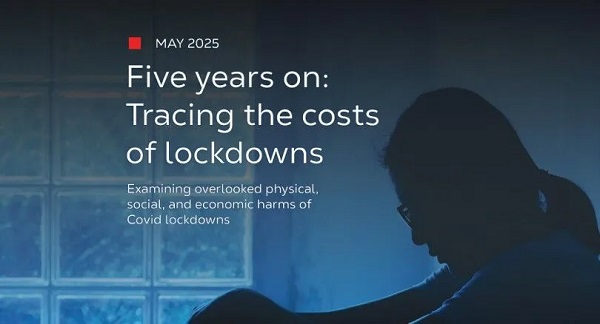
In 2019, 67 percent of Canadians rated their mental health as “very good or excellent.” By 2023, that figure had dropped to just 54 percent.
A new report from the Justice Centre for Constitutional Freedoms examines the immediate and long-term negative impacts of Covid lockdowns, including physical, social, and economic harms. It also underscores the lack of transparent, evidence-based analysis by governments to justify these measures.
The report details how policies introduced with the stated goal of saving lives came at an extraordinary cost to Canadians’ mental and physical health, access to healthcare, economic security, and civil liberties.
One of the most concerning findings is the sharp decline in Canadians’ mental health. In 2019, 67 percent of Canadians rated their mental health as “very good or excellent.” By 2023, that figure had dropped to just 54 percent.
Meanwhile, the number of Canadians reporting “fair or poor” mental health nearly doubled—from 8 percent to 15 percent. This trend was seen across all age groups, but especially among young adults.
Indeed, despite facing minimal risk from Covid, young Canadians suffered some of the most serious consequences of lockdown measures. Non-Covid deaths among Canadians under age 45 rose by 22 percent, driven by factors such as disease, addiction, delayed treatment, and suicide. Physical activity among youth dropped significantly during this period, while time spent on screens—such as cell phones, computers, and tablets—increased sharply. Up to 70 percent of children and teens reported experiencing anxiety, depression, or other serious mental health issues.
A particularly alarming trend was the surge in opioid-related deaths. From 2020 to 2023, annual opioid overdose deaths increased by 108 percent. In 2023 alone, 8,606 Canadians died from opioid toxicity—more than double the pre-lockdown average. British Columbia, Alberta, and Ontario recorded the highest rates, with the vast majority of deaths involving fentanyl.
During Covid, thousands of medical check-ups, diagnoses, and treatments were delayed or cancelled, resulting in a serious and ongoing backlog in Canada’s healthcare system.
Wait times for medical treatments increased by 43 percent between 2019 and 2024, reaching a median of 30 weeks. MRI wait times rose by 55 percent. For certain cancers, including breast and prostate, surgery delays increased by as much as 34 percent. Since 2018, more than 74,000 Canadians have died while waiting for surgery or diagnostic care—over 15,000 of them in 2023–24 alone. The actual number is likely higher, due to poor provincial tracking and reporting.
The economic impact was equally severe. Lockdowns resulted in widespread job losses, particularly among low-wage workers, while the “laptop class” remained largely unscathed. While many public sector jobs expanded during this time, Canadians in hospitality, retail, and service sectors faced prolonged unemployment. The expansion of public spending and government debt contributed to rising inflation, driving up the cost of food, housing, and other essentials.
Crime rates also rose during the lockdown years. Homicides peaked in 2022 at 17 percent above trend, with 882 victims across Canada. Cybercrime nearly doubled, rising from 48,000 cases in 2019 to over 93,000 in 2023. Identity theft and fraud increased to 120 percent above trend in 2020, with similar levels in the following years. Particularly troubling was the rise in online child sexual exploitation, which reached 18,650 reported cases in 2023—a 173 percent increase from 2019.
Benjamin Klassen, Education Coordinator at the Justice Centre, says the findings demand accountability. “This report calls for governments to take responsibility for the damage done during this period and ensure that future public health policies uphold the Charter rights and freedoms of all Canadians.”
Mr. Klassen continues, “The Charter requires governments to ‘demonstrably’ justify any freedom-limiting policy. To date, no federal or provincial government in Canada has conducted the kind of comprehensive impact assessment required to justify the lockdowns.”
He concludes, “The evidence is clear: the harms of lockdowns outweighed their benefits. Canadians deserve an honest and transparent evaluation of lockdown harms, so that these mistakes are never repeated.”
COVID-19
Canada’s top doctor signed oath to withhold COVID info that could ‘embarrass’ Trudeau’s cabinet: records
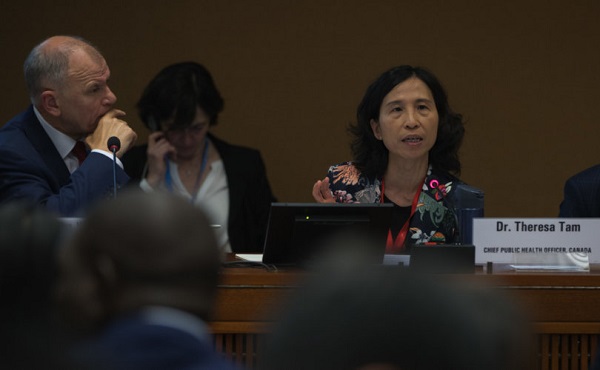
From LifeSiteNews
Dr. Theresa Tam and dozens of managers with the Public Health Agency and Departments of Foreign Affairs, Health, Industry and National Defence signed an oath that prevented them from divulging information related to the COVID crisis
Dozens of Canada’s top health managers and the nation’s top doctor were required to sign a secret oath that prevented them from divulging information relating to the COVID crisis to not “embarrass” the federal government at the time.
Access to Information records show that Dr. Theresa Tam, Canada’s Chief Public Health Officer, and “quite a few” other COVID pandemic managers had to sign the pledge, as noted by Blacklock’s Reporter.
An internal staff email sent in 2020 from Alan Thom, vaccine supply manager with the Public Health Agency, showed he complained that so many managers had to take an oath of secrecy “at a certain point the Department of Public Works determined individual non-disclosure agreements were no longer needed for federal employees as we are all covered through our responsibilities as public servants.”
In total, 29 managers signed the oath with the Public Health Agency and Departments of Foreign Affairs, Health, Industry and National Defence.
The oath came right after the federal government, under former Prime Minister Justin Trudeau, signed a deal to buy mRNA COVID jabs with pharmaceutical companies.
The oath noted, in part, that “Unauthorized disclosure of any confidential information, including but not limited to disclosures or communications to supplier competitors or to the media may result in embarrassment, criticism or claims against Canada and may jeopardize Canada’s supplier relations and procurement processes.”
It continued, stating, “As an employee of the Government of Canada I acknowledge I have read and understood the Values And Ethics Code For The Public Sector,” the pledge stated. “I remain bound by my oath.”
Tam is a strong proponent of the COVID shots. At the peak of the COVID crisis in Canada, the Trudeau government signed about $8 billion in contracts with multiple companies, including, AstraZeneca, Johnson & Johnson, Medicago, Moderna, Novavax, Pfizer and Sanofi.
The first COVID jab to be approved for use in Canada was Pfizer’s BioNTech mRNA injection, which became available on December 9, 2020. Moderna’s mRNA jab followed a couple of weeks later. Of note is the launch of the jabs came after the Trudeau government gave vaccine makers a shield from liability regarding jab-related injuries.
MPs who asked questions to see the contacts were told they were not allowed to view them.
Canada’s Vaccine Injury Support Program (VISP) was launched in December 2020 after the government gave vaccine makers a shield from liability regarding COVID-19 jab-related injuries.
Recently, VISP injury payments are expected to go over budget, according to a Canadian Department of Health memo.
As reported by LifeSiteNews last week, a government-funded inhaled version of the COVID mRNA vaccines developed with abortion-tainted fetal cell lines is now entering Phase 2 clinical trials.
The federal government continues to purchase the COVID shots despite the fact its own data shows that most Canadians are flat-out refusing a COVID booster injection. It also comes as the government has had to increase spending on VISP, as reported by LifeSiteNews last week.
Canadians’ decision to refuse the shots also comes as a Statistic Canada report revealed that deaths from COVID-19 and “unspecified causes” rose after the release of the so-called “safe and effective” jabs.
LifeSiteNews has published an extensive amount of research on the dangers of the experimental COVID mRNA jabs that include heart damage and blood clots.
The mRNA shots have also been linked to a multitude of negative and often severe side effects in children, and all have connections to cell lines derived from aborted babies.
-

 COVID-192 days ago
COVID-192 days agoCanada’s top doctor signed oath to withhold COVID info that could ‘embarrass’ Trudeau’s cabinet: records
-

 Addictions1 day ago
Addictions1 day agoNew Report – Five years on: Tracing the costs of lockdowns
-
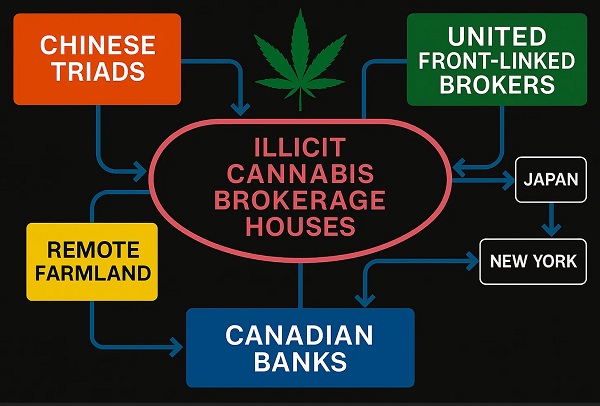
 Crime1 day ago
Crime1 day agoHow the CCP’s United Front Turned Canada’s Legal Cannabis Market into a Global Narcotics Brokerage Network
-
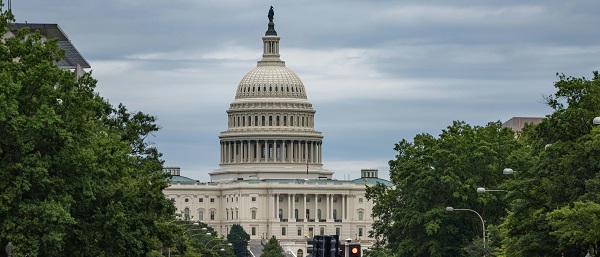
 espionage1 day ago
espionage1 day agoGOP rep moves to shred PATRIOT Act, dismantle Deep State spy powers
-

 International2 days ago
International2 days agoFirst American pontiff says ‘build bridges’ to peace
-

 Business8 hours ago
Business8 hours agoLEGO to invest $366 million on major U.S. expansion
-
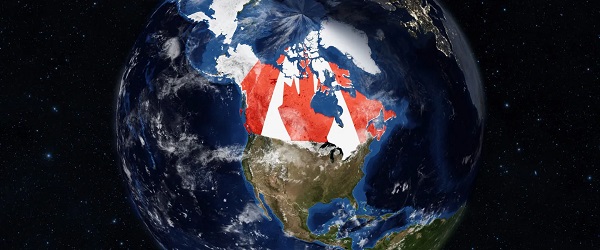
 Business12 hours ago
Business12 hours agoCarney must work to grow Canada’s economic pie
-

 Energy13 hours ago
Energy13 hours agoCanada to build it’s first four small modular nuclear reactors
